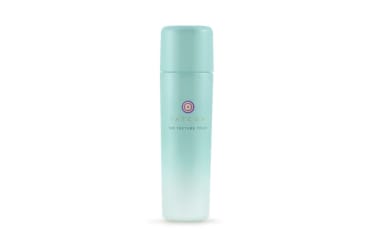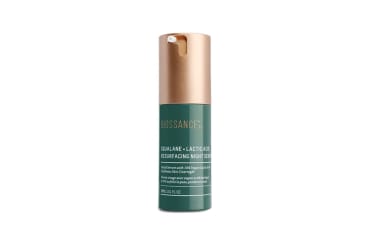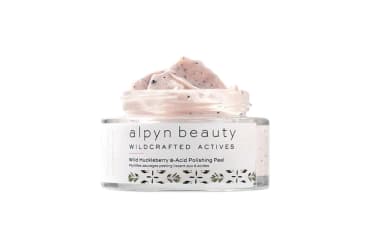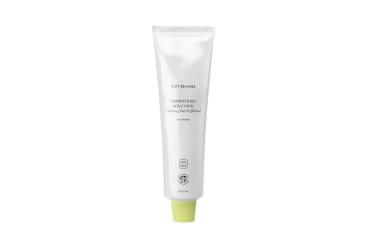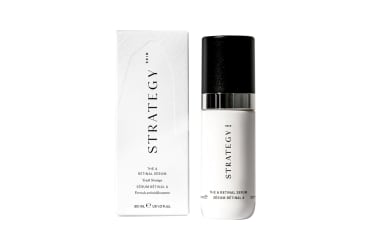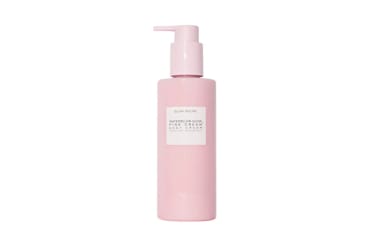Advertisement
Beauty Breakdown: Our Full Exfoliation Guide, With All The Expert Tips You Need

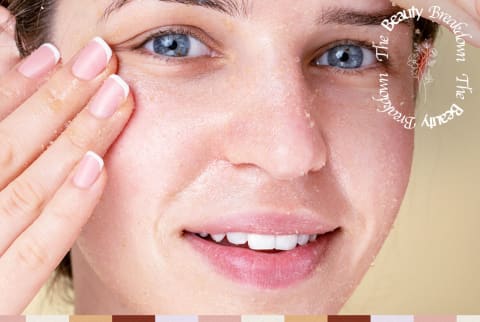
As a collective beauty culture, I think we've finally overcome the acid craze that captivated the past few years. As phrases like the moisture barrier and skin microbiome become more familiar to the average consumer, people understand that you simply cannot exfoliate every single day without literally stripping your skin raw. Your skin needs time to rest and recharge. (Say it with me now!)
Oh, but exfoliators are so fun, aren't they? They come in so many sensorially appealing forms and provide instantly gratifying results. Exfoliating is also inherently active—it feels like you're truly doing something to your skin, which makes it all the more tantalizing to experiment with different complexion-enhancing formulas. And while some may consider exfoliation an extra, nonessential step in a skin care routine, for most people it's actually necessary for healthy, plump, youthful-looking skin—so long as you don't scrub your skin raw.
It raises the question: How do you reap the benefits of exfoliation without going overboard? And what's the best type of exfoliation for your skin type? You’ve come to the right place—here's everything you need to know about buffing and polishing the skin.

The 101 on skin exfoliation.
Let's begin with a basic definition: Exfoliation is the process of removing dead skin cells from the outer layer of the skin. Now, your skin naturally exfoliates itself every single day—in fact, you shed between 30,000 and 40,000 dead skin cells every minute. However, things like weather, lifestyle, skin care products, age, and dehydration can slow down or halt this process, which can result in dull, flaky, congested skin over time. That's where routine exfoliation comes into play: You can take matters into your own hands to speed up cell turnover, either by manually lifting those cells with a physical scrub or tool or using certain skin care ingredients to gently dissolve them (more on that later).
No matter which way you choose to approach it, regular exfoliation can reveal a vibrant, youthful, clear complexion. Here are some specific highlights:
- Clears pores: As dead skin cells begin to accumulate, they can create a seal over the pores and trap dirt and bacteria underneath them, leading to breakouts. By sweeping away dry skin and other debris, you can keep the pores free of gunk.
- Softens fine lines: Exfoliation won't necessarily take away signs of aging, but it does slough away dry, dead skin cells and reveal fresh skin underneath. Those new, baby skin cells help reflect light better, and glowing skin has a more youthful appearance.
- Fades dark spots: When you experience dark spots, that pigmentation resides in the upper layers of the skin. When you slough off that layer and encourage turnover, it helps fade that superficial discoloration. The spots won't disappear after just one go, but you may notice those marks become lighter over time.
- Stimulates collagen production: Some exfoliating actives have been shown to increase collagen production1 when used topically. These ingredients can trigger a restorative healing response in the skin, which in turn spurs collagen production.
- Improves absorption of skin care: Again, an excess of dead skin cells creates a seal over your pores, which can keep your potent serums from penetrating the skin. Exfoliating primes your pores to receive your favorite skin care potions, so they can actually produce results.

The 7 things we're getting wrong right now.
Yes, exfoliation provides an instantly gratifying glow—assuming you do it correctly. Be sure you aren't making these common mistakes:
- Going overboard. Dead skin is not the enemy. In fact, the epidermis uses dead skin cells as a layer of barrier and buffer. Remove too much of that outermost layer (like when you pile on an exfoliating cleanser, toner, and serum, for example), and it will inhibit skin barrier function. Think irritation, redness, inflammation, and even more breakouts.
- You're not moisturizing after. Exfoliation without hydration is a recipe for a weakened skin barrier. After you slough off dead skin, you'll want to follow up with a quality hydrator.
- Forgetting about sneaky, everyday items. Sneaky everyday items can also exfoliate your skin, sometimes without you even knowing it. For example: using a loofah to cleanse or a terry-cloth towel post-rinse, especially if you use firm pressure or coarser fabrics. (That's why experts always recommend you pat dry.)
- You're using abrasive scrubs or brushes. Many experts advise against facial cleansing brushes to slough away grime, as they have the potential to strip the skin and cause dryness. If you absolutely must use a handheld scrubber, stick to gentler silicone tools. On that note, make sure your face scrubs include gentle granules, like finely granulated white or brown sugar, finely ground oatmeal, or finely ground flours. Jagged ingredients, such as shells and fruit pits, are a no-go.
- Using a body exfoliator on the face—and vice versa. "Body exfoliators shouldn't be used on the face. They are often thicker in consistency and contain higher concentrations of acids and could be too irritating for delicate facial skin," says board-certified dermatologist Raechele Cochran Gathers, M.D. "Likewise, using a facial exfoliation on your body may not be strong enough to give you the results you're looking for."
- Skipping the scalp. Your scalp is your skin, and it can encounter buildup the same way you can on your face. Accrue too much oil, product, and overall gunk up top, and it can lead to scalp inflammation, resulting in flakes, itching, tenderness, and even hair loss down the line.
- You're layering retinoids and exfoliators. On the night(s) you exfoliate, stow the retinoid. Let's not forget that retinoids also promote cell turnover, exfoliation, and collagen production, so you don't want to use an AHA or BHA product and then apply a retinoid right after (be it prescription-strength or OTC). Not only can it lead to irritation, but the ingredients may also inactivate each other.

The 5 steps you need to know.
Consider this your essential exfoliation checklist:
Decide which type of exfoliation you prefer.
At-home exfoliation comprises two buckets: physical and chemical. Physical exfoliation involves manually lifting and removing dead skin cells (think scrubs, tools, and the like). Many people prefer this method, as you can control the pressure and, thus, the strength of the exfoliant. Physical exfoliation can also offer more immediate results: "Physical exfoliation offers instant gratification, as dead skin cells and dirt are swept away during the treatment—it's perfect if you need an immediate glow. Some patience is required with chemical exfoliation," says board-certified dermatologist Jessie Cheung, M.D., founder of Cheung Aesthetics and Wellness. Not to mention, the actual scrubbing itself can stimulate blood circulation, which offers even more of a glow.
Chemical exfoliants, on the other hand, use naturally exfoliating acids such as hydroxy acids (AHAs, BHAs, or PHAs) or enzymes to dissolve dead skin cells. Those with sensitive or dry skin might find chemical exfoliants particularly useful, as some light, low-concentration acids can gently promote cell turnover—as opposed to scrubbing with potentially irritating beads or granules.
Choose your exfoliating preference, but stick to one method and call it a day. You don't want to be using both physical and chemical exfoliation at the same time—that's way too harsh for the skin barrier to handle.
Know your AHAs and BHAs.
If you do decide to go the chemical route, it's important to be mindful of the acids your skin can and cannot handle. See, different types of acids are better suited for certain skin types: For example, alpha-hydroxy acids (AHAs) are hydrophilic, meaning they are water-loving; these are used to slough off dead skin cells, brighten, even tone, and reverse signs of aging. "They can be simultaneously exfoliating and hydrating, making them very beneficial to many skin types," says board-certified dermatologist Mona Gohara, M.D.
Beta-hydroxy acids (BHAs), on the other hand, are lipophilic, meaning oil- and fat-loving. "These are really good at breaking through oil and sebaceous skin," says Gohara. That said, those with clogged pores and acne-prone skin might want to opt for an oil-soluble BHA. From there, you can take note of the acid's molecular weight, which will determine how quickly it penetrates into the skin (and thus, how gentle or irritating it can be). Below, discover a few star players:
- Glycolic acid: This AHA is beloved for addressing discoloration, scarring, and fine lines. Just know that it has the smallest molecular weight of all the alpha-hydroxy acids, which means it penetrates the outer layer quite quickly, which can result in irritation for some.
- Lactic acid: This AHA is well tolerated given its larger molecular size, which means it can't penetrate as deeply as others. All of the hard work of the acid happens on the surface of the skin, which decreases the amount of irritation.
- Mandelic acid: Compared to other AHAs, mandelic acid has a unique ability to penetrate deep into oily pores. It has even been shown to reduce excess sebum production and oily shine2. Plus, it's the largest in molecular size (even larger than lactic acid!), which may make it more tolerable for easily irritated skin types.
- Salicylic acid: Salicylic acid is one of the most popular BHAs, beloved especially for acne- or oil-prone skin. The chemical exfoliant can gently dissolve dead skin cells by breaking apart the bonds that hold them together, penetrating deep into your pores and unclogging them at the source.
Find your exfoliation sweet spot.
"With exfoliation, there is such a thing as too much," board-certified dermatologist Flora Kim, M.D., FAAD, tells mbg about exfoliation routines. "If you use too harsh of an exfoliant and too often, you will strip, irritate, and damage your skin instead of helping it."
Everyone's skin is different, so it's difficult to give one cut-and-dried recommendation, but as a general rule: Less is more. Start slow, and work your way up to a regular cadence as tolerated. If you need a specific schedule to follow, "Most people with normal or combination skin can get away with twice or even thrice-weekly exfoliation," Cochran-Gathers says. "Those with more mature, dry, or sensitive skin may only want to exfoliate weekly."
Moisturize after.
After exfoliating any patch of skin, face or body, you need to follow up with a moisturizer to repair the skin barrier and keep it hydrated. It's crucial to soothe the skin after slathering on an acid or scrubbing it with any sort of abrasive; not to mention, keeping the skin aptly moisturized helps to avoid dead skin cells from accumulating in the first place. Feel free to browse these body lotions and face creams for top-notch barrier support.
Take recovery days (or weeks!).
I repeat: Dead skin cells are not inherently bad! In fact, dead skin is necessary for proper skin function, as they help lock in moisture and keep the precious water from seeping out. So you don't want to be sloughing them off every single night—rather, spend some time simply pampering your skin barrier.
"It's like when you go to the gym, you need days to recover. The same thing holds true for the skin barrier and the microbiome," says board-certified dermatologist Whitney Bowe, M.D., on the mindbodygreen podcast. "You want to use a retinol? Go for it. You want to use an AHA, like glycolic acid? Go for it, but give yourself two nights off when you're just using nourishing, hydrating ingredients." For example, she suggests prebiotics, jojoba oil, sunflower seed oil, glycerin, hyaluronic acid, and aloe on recovery nights to replenish the skin barrier.

3 extra ideas—in case you want to go all out.
Looking to go above and beyond? I applaud your determination! Here are some extra tips to supercharge exfoliation:
Skin cycling.
We can credit board-certified dermatologist Whitney Bowe, M.D., for coining the buzzy skin cycling regimen. "Skin cycling does two main things," she notes on TikTok. "First, it prevents irritation. Secondly, it really helps you get the most out of each one of your powerful active products." Essentially, it's a four-day cycle to help dole out your actives: Night No. 1 is for exfoliation, night No. 2 is for retinol, and nights No. 3 and 4 are dedicated to skin recovery.
There's a good reason to kick off the routine with exfoliation: "Not only does that give you an immediate glow, but it actually helps prep your skin to get the most out of Night No. 2," Bowe says. Again, without a layer of excess dead skin blocking the pores, those subsequent actives can have an easier time penetrating the skin.
Use an enzyme mask in the shower.
Enzymes are tiny molecules found in fruits (think pumpkins, cherries, and papaya) that break down keratin—aka, the protein in dead skin cells. They're slightly different from AHAs or BHAs: They get rid of dead skin cells at the surface of the skin, but they don't exactly promote cell turnover for living cells underneath. Think of enzymes as shedding already dead skin and buffing it smooth rather than a forced cell turnover.
And enzymes do their best work when the temperature of your skin is increased, as a hotter temperature makes their chemical reaction that causes exfoliation faster and more powerful. That's why experts recommend wearing enzyme masks in the shower, as the temperature increase can enhance their efficacy. Even a lukewarm shower does just the trick.
DIY a body or lip scrub.
DIY ventures can be tricky, especially when it comes to exfoliating agents (note: It's best to stay away from ingredients like lemon juice and apple cider vinegar). However, if you absolutely must attempt a kitchen project, sugar scrubs make great body and lip exfoliators.
Every makeshift scrub has two simple components: a physical exfoliant and an emollient (any sort of carrier oil, like olive or jojoba, will do). As long as you have those two, you can create a scrub out of virtually anything—brown sugar, coffee grounds, oats, and the list goes on. Create a jar of your favorite concoction, and smear it on your body and lips whenever you'd like to buff away flakes.

The 8 products to try.
Here, the products beauty experts can't get enough of.
Best cleanser: Skinfix Acne+ 2% BHA + Azelaic Acid + Niacinamide + AHA Cleanser
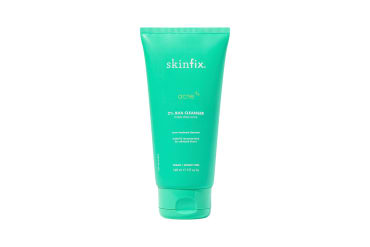
Pros
- Can use frequently without disrupting the skin barrier
Cons
- Some reviewers report a goopy texture
Considerations:
VeganCruelty-freeChemical exfoliatorFragrance-freeWith 2% salicylic acid, 2% niacinamide, and 1% azelaic acid, this cleanser can clear clogged pores, balance oil production, and brighten dull skin. Exfoliating cleansers also tend to be much gentler on the skin than a leave-on product (like toner or serums), so they can get away with higher concentrations of actives. And to keep the formula hydrating, you'll find glycerin and camellia leaf extract to simultaneously soothe the skin.
Pros
- Fades dark spots
- Tingles without irritating the skin
Considerations:
Cruelty-freeThis toner provides that delicious, tingly feeling without leaving your skin itchy and irritated. The formula includes a bouquet of fruit AHAs derived from apple, grapefruit, orange, lemon, lime, hawthorn, and jujube fruit extracts, along with wild rose extract and niacinamide to visibly brighten tone and fade hyperpigmentation. Japanese mugwort also makes an appearance—it's a botanical known for calming down redness—which makes the formula gentle enough to keep the moisture barrier intact.
Advertisement
Pros
- Great for dry and sensitive skin types
- Helps get rid of textured bumps
Cons
- Some may prefer stronger exfoliating actives
Considerations:
VeganCruelty-freeChemical exfoliatorThis nourishing yet potent serum features 10% vegan lactic acid to boost cell turnover, fade dark spots, and improve the look of fine lines and wrinkles. (Yes, lactic acid naturally comes from dairy products, but you can make safe synthetic options that are vegan.) Of course, the formula also features the brand's signature sugar-cane-derived squalane—the ingredient mimics your skin's natural sebum, which helps prevent overdrying as the AHA does its work.
Pros
- Provides quick results
Cons
- Very potent, which can be irritating for some
Considerations:
VeganCruelty-freeChemical exfoliatorPhysical exfoliatorA face mask-slash-face scrub, this formula includes a blend of eight naturally derived acids (salicylic, citric, malic, tartaric, glycolic, azelaic, ferulic, and lactic) to unglue dead skin cells and bamboo powder to physically exfoliate. While you shouldn't layer physical and chemical exfoliants yourself, some products formulate the two at just the right concentration to provide extra brightness without overloading your skin. In just five minutes, your skin will look noticeably more glowy.
Advertisement
Pros
- Great for acne-prone skin
Cons
- Might irritate sensitive skin
Considerations:
VeganCruelty-freeChemical exfoliatorFragrance-freeBody acne is no match for this exfoliating gel-serum. It contains lactic acid and urea to address any textural or tonal concerns you may have, while aloe, centella asiatica, and hyaluronic acid help hydrate and soothe. Just make sure to apply it on dry (not damp) skin so the actives can easily penetrate.
Best scalp scrub: Briogeo Scalp Revival Charcoal + Tea Tree Cooling Hydration Scalp Mask
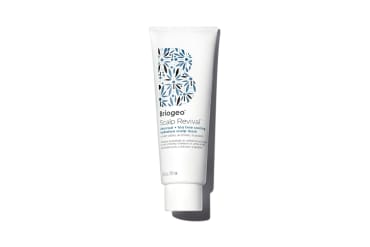
Pros
- Provides instant cooling relief
Cons
- Essential oils can be irritating
Considerations:
VeganCruelty-freeChemical exfoliatorCharcoal is a popular ingredient for scalp scrubs and masks, as the ingredient can effectively draw dirt and oil from the hair follicles. Briogeo also folds in tea tree, peppermint, and spearmint essential oils into their scalp-exfoliating formula, all of which can stimulate, soothe, and invigorate the scalp. Talk about a fresh, clean feeling.
Advertisement
Pros
- A great way to level up OTC retinols
Cons
- Pricey
Considerations:
VeganCruelty-freeChemical exfoliatorDo you find prescription-strength retinoids way too harsh, yet OTC retinols don't seem to procure the most glowy results? Allow us to introduce you to retinal (aka retinaldehyde), a type of retinoid that functions as a strong (yet not too strong) middle ground. This pick from Strategy Skin also combines peptides, squalane, hyaluronic acid, beta-glucan, and niacinamide to buffer the potent active and provide even more antioxidant support—your skin will appear so much more supple.
Pros
- Hydrates without leaving a greasy film
Cons
- Has a strong watermelon smell, if you're sensitive to scent.
Considerations:
VeganCruelty-freeChemical exfoliatorThis lightweight body cream makes your skin feel downright juicy. Hibiscus-derived AHAs gently stimulate cell turnover, while watermelon seed butter and hyaluronic acid provide an airy, never-sticky veil of hydration. Bonus tip: Apply this lotion a day or two before shaving for oh-so-silky results.
Advertisement

The beauty breakdown.
There are so many nuances to mind when it comes to exfoliation—your skin type, lifestyle, and preferred formulas all play a role in your perfect routine. At the end of the day, the most important thing is to listen to your own skin; your skin is your biggest ally, and it will likely tell you when you've gone overboard. But once you work out the kinks and have your exfoliating routine down pat, you'll be well on your way to a healthier, brighter complexion.

